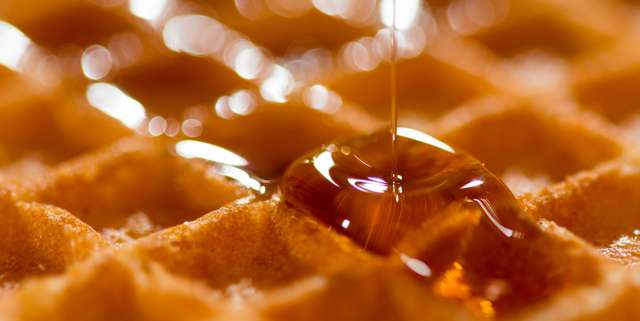
Maple syrup in the comb of a waffle. Image Credit: Unsplash user nabil boukala
Growing up in New England, I was raised to pay attention to my maple syrup. We were allowed to eat as much “table syrup” as we liked, but when it came to the real stuff—the good stuff—we had to ration and apportion each perfect drop. When we were able to use it on our pancakes, waffles, or french toast, we were over the moon. We’d carefully drizzle the sticky bottle over our dishes, savoring each bite so long our meal would be cold by the time we were done. To this day, when it comes time for me to buy maple syrup, only the real thing will do.
Maple Syrup Grades Assigned By Color
Of course, not all maple syrup is the same. Maple syrup exhibits a wide range of color, turbidity, viscosity, and flavor, depending on the properties of the raw maple sap and the particularities of processing. Some are dark and stormy, like a blizzard on the mountain, while some are so light and airy they seem to be the food of angels.
For many years, maple syrups were classified and graded according to United States Department of Agriculture (USDA) color standards, with a significant bias toward lighter syrups. Lighter syrups were grade A, while darker syrups were relegated to grade B. This created a consumer perception that lighter syrups were preferable to darker syrups.
While this color-based grading system was voluntary, not mandatory, it nonetheless created difficulties for manufacturers of darker syrups. This resulted in multiple deleterious effects, including the reduction of manufacturer revenue. Grade B syrups, regarded as inferior, could not sell for the same price as grade A syrups, reducing the amount of yield each manufacturer could glean from their harvest.

Maple trees display their fall foliage. Image Credit: Unsplash User Dennis Buchner



